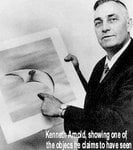Well, it can beJohn Frazer said:The whole question of "if they were good, where are they today" is a red herring.
The XB-70 was pathologically expensive...Let's ask fans of he XB-70
I think you might be referring to the XF5U, the V-173 flew fine absent some vibration (it wasn't as severe as the XF5U). The speed was limited more by having a landing-gear.Langley history says that after seeing the S-2, Zimerman published his patents, using the identical planform with his props design.
V-173 could have gotten more speed with normal props that didn't limit it, by being designed to interact with the wing-tip vortex.
This actually was discussed in another thread which I gathered you didn't read. The bulk of the lift seemed to be produced by the slipstream however from what it would appear the degree to which the propellers affected the vortex varied with speed and AoA. At lower speeds it appeared the effect was more significant (depending on how I read the data it was either 7%, 30-50% though I could be wrong).Langley tests showed that they didn't help with drag reduction, or controllability or stability -hampered stability a bit.
With normal sorts of props driven by the 2 80hp engines it should have been faster, but for Zimmerman's hobby of the exaggerated props.
Actually, Zimmerman wanted to put the flapping props on the design right off the bat. Vought decided it wasn't needed, so they had to graft on a feature they could have put in from the outset and would have probably seen the aircraft in the air earlier.XF5U never was able to fly because of "Zimmerman's folly", those silly geared flapping props.
Part of me honestly wonders how much of the decision to cancel the XF5U had to do with jets being the wave of the future, or the post-war budget battles
- The politicians wanted to reduce military spending funding as the war was over, and wars are economically ruinous when there's no conquest and plundering.
- With only limited amounts of money available, each service wants the biggest piece of the pie it can get
- The US Navy in demolishing the IJN basically left it with no counterpart that wasn't an ally, so there was a desire to scale it back into what would amount to a glorified coast-guard and submarine service.
- The US Army argued that there would be no need for any amphibious invasions in the future (i.e. no need for the USMC), and it's air-arm could achieve all the basic things the USN could achieve, eliminating much of it's use (basically, it stood to be scaled back to a relatively small surface, and submarine force).
- The USAAF/USAF wanted to gobble up all aerial assets they could, including the USN's: They roundly disliked carriers because they couldn't control them and sought to gut carrier aviation. They did this by claiming that carriers could not defend against nuclear equipped bombers (which wasn't entirely true), and could not deliver nuclear ordinance.
- The USN countered these arguments by pitting the F2H against the B-36's as soon as they could, and developing a new super carrier to field a jet-powered bomber with a nuclear armament (They did field P2V's with nuclear ordinance, but they couldn't land; the AJ Savage was propeller driven and could probably used to be faster).











